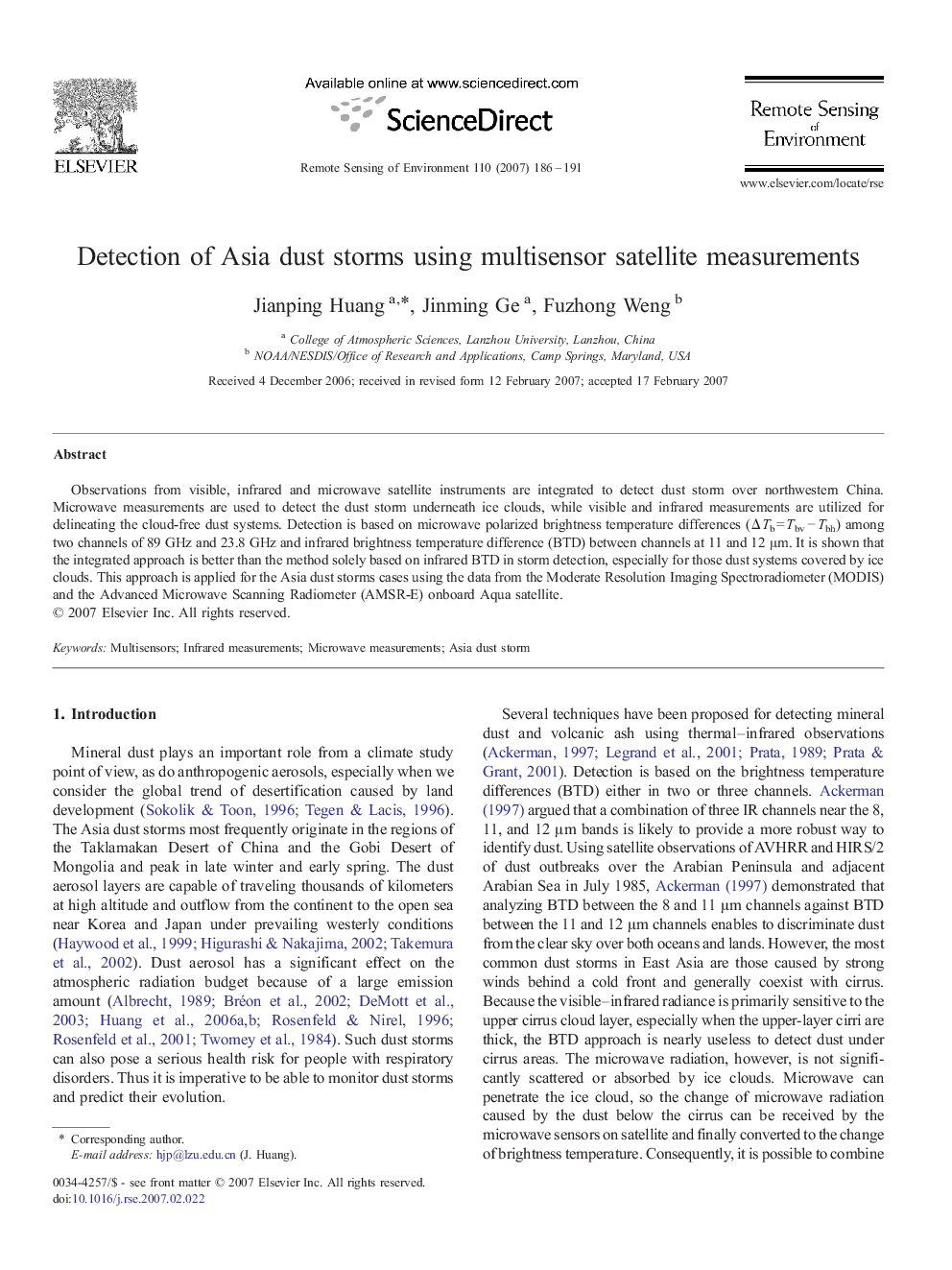| Article ID | Journal | Published Year | Pages | File Type |
|---|---|---|---|---|
| 4460711 | Remote Sensing of Environment | 2007 | 6 Pages |
Observations from visible, infrared and microwave satellite instruments are integrated to detect dust storm over northwestern China. Microwave measurements are used to detect the dust storm underneath ice clouds, while visible and infrared measurements are utilized for delineating the cloud-free dust systems. Detection is based on microwave polarized brightness temperature differences (ΔTb = Tbv − Tbh) among two channels of 89 GHz and 23.8 GHz and infrared brightness temperature difference (BTD) between channels at 11 and 12 μm. It is shown that the integrated approach is better than the method solely based on infrared BTD in storm detection, especially for those dust systems covered by ice clouds. This approach is applied for the Asia dust storms cases using the data from the Moderate Resolution Imaging Spectroradiometer (MODIS) and the Advanced Microwave Scanning Radiometer (AMSR-E) onboard Aqua satellite.
